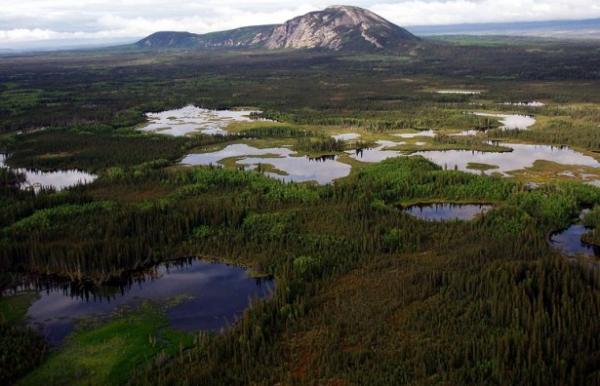First Nations Are Slowing Global Warming by Protecting Boreal Forest: NatGeo

Residents of Poplar River First Nation in Manitoba, Canada are being credited with spearheading a sovereignty movement that in effect combats global warming by preserving their boreal forest homelands.
Rich with mineral and other resources that are coveted by major industry, traditional lands in some cases have no more than the environmental stewardship ideals protecting them from massive development. Key to implementing those is reconnecting to the land, which they are doing through sovereignty initiatives.
“The traditional territory of the Poplar River First Nation, for example, is the size of Yellowstone Park and mostly undeveloped. Like other First Nations, the people of Poplar River want it to stay that way,” National Geographic explained in a story published online on February 25. “Consequently, the effort to regain control of ancestral land has become a potent environmental strategy, especially as the world's industrialized countries go to ever greater extremes to satisfy their appetite for natural resources.”
Aiming to do nothing more than reclaim traditional territory and live off the land, several First Nation bands and communities east of Lake Winnipeg, including Bloodvein First Nation, Little Grand Rapids First Nation and Pauingassi First Nation, have unintentionally become part of “the vanguard of the definitive environmental battle of our time,” National Geographic noted.
RELATED: Report Finds Canada's Boreal Forest Key to World's Survival
Over the past few years they have won sovereignty rights over large tracts of land beyond their reserves. They went the extra step of applying for the region—whose area now exceeds the size of Belgium—to be classified as a UNESCO Heritage Site. This threw the UNESCO panel into a quandary, because that European-based body had always made designations based on manmade structures, National Geographic said, while the entire point of the designation, in the First Nations’ eyes, is to keep such structures from being built. They have named the region Pimachiowin Aki, The Land That Gives Life.
“UNESCO told us in 2013 that they didn’t adequately recognize the bonds that exist in some places between culture and nature,” said William Young of Bloodvein River First Nation and the Pimachiowin Aki spokesperson in a statement when the group resubmitted its application on January 30. “We appreciated the opportunity to explain to them even more clearly the special relationship our people have with the land for generations in this deeper nomination. Our belief that a World Heritage Site can help protect the boreal forest and our culture—is as strong as ever.”
“Our elders remind us that the Creator made this land,” says Sophia Rabliauskas, one of the lead conservationists, in the introductory video on the Pimachiowin Aki website. “And they expect us to look after it for our children, and for children around the world.”
The next determination will be made in 2016.
Read Canadian First Nations Seek to Protect Forest Homeland in National Geographic
Read more at http://indiancountrytodaymedianetwork.com/2015/02/26/first-nations-are-slowing-global-warming-protecting-boreal-forest-natgeo-159390